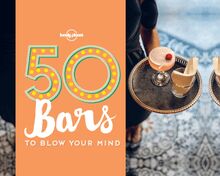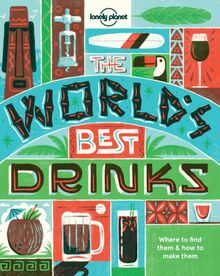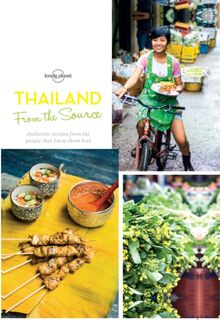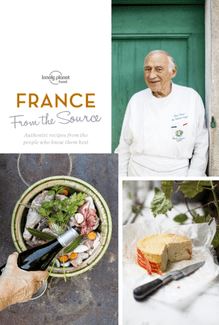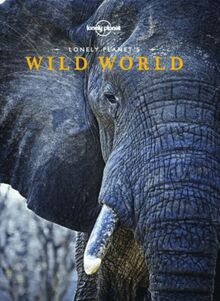-
 Univers
Univers
-
 Ebooks
Ebooks
-
 Livres audio
Livres audio
-
 Presse
Presse
-
 Podcasts
Podcasts
-
 BD
BD
-
 Documents
Documents
-
- Cours
- Révisions
- Ressources pédagogiques
- Sciences de l’éducation
- Manuels scolaires
- Langues
- Travaux de classe
- Annales de BEP
- Etudes supérieures
- Maternelle et primaire
- Fiches de lecture
- Orientation scolaire
- Méthodologie
- Corrigés de devoir
- Annales d’examens et concours
- Annales du bac
- Annales du brevet
- Rapports de stage
La lecture à portée de main
Vous pourrez modifier la taille du texte de cet ouvrage
Découvre YouScribe en t'inscrivant gratuitement
Je m'inscrisDécouvre YouScribe en t'inscrivant gratuitement
Je m'inscrisEn savoir plus
Vous pourrez modifier la taille du texte de cet ouvrage
En savoir plus

Description
Sujets
Informations
| Publié par | Lonely Planet Global Limited |
| Date de parution | 01 mai 2016 |
| Nombre de lectures | 0 |
| EAN13 | 9781760341763 |
| Langue | English |
| Poids de l'ouvrage | 10 Mo |
Informations légales : prix de location à la page 0,0500€. Cette information est donnée uniquement à titre indicatif conformément à la législation en vigueur.
Extrait
CONTENTS
FOREWORD
BEER
Michelada Mexico
CIDER
Mulled cider United Kingdom
WINE
Glögi Finland
Kalimotxo Spain
Mimosa France
Sangria Spain
Terremoto Chile
GIN
Martini USA
Negroni Italy
Pimm’s United Kingdom
Singapore Sling Singapore
Sloe gin United Kingdom
Tom Collins USA
VODKA
Bloody Mary France
Caesar Canada
Cade Codder USA
Cosmopolitan USA
Espresso Martini United Kingdom
Siam Sunray Thailand
RUM
Daiquiri Cuba
Dark and Stormy Bermuda
Eggnog United Kingdom
Hibiscus ginger punch Jamaica
Mai tai California & Polynesia
Mojito Cuba & the Cuban diaspora
Piña colada Puerto Rico
Tasmanian bushwalkers’ rum hot chocolate Australia
WHISKY
Caribou Canada
Irish coffee Ireland
Manhattan Ireland
Mint julep USA
Sazerac USA
TEQUILA
Margarita Mexico
Paloma Mexico
Sangrita Mexico
AT THE BACK OF THE SPIRIT CABINET
Canelazo The Andes
Caipirinha Brazil
Garibaldi Italy
Kvas Russia
Macuá Nicaragua
Pisco sour Peru & Chile
Tongba Nepal & India
NON-ALCOHOLIC DRINKS
Água de coco Brazil
American milkshake USA
Anijsmelk The Netherlands
Ayran Turkey
Bandung Malaysia & Singapore
Bubble tea Taiwan
Cardamom tea East Africa
Chai India
Cocoa tea St Lucia
Coffee Worldwide
Egg cream USA
Espresso soda USA
Horchata Mexico
Malted milkshake USA
Mango lassi India
Mint tea Morocco
Oliang Thailand
Root beer float USA
Shirley Temple USA
Banana smoothie Worldwide
Tea China
Teh tarik Malaysia & Indonesia
Yuan yang Hong Kong
Glossary
Authors
ACKNOWLEDGEMENTS
© MICHAEL HEFFERNAN/LP MAGAZINE
FOREWORD
BY VICTORIA MOORE
Smell is the most evocative sense we have. One sniff of a glass filled with thick yoghurt mixed with luscious Alphonso mango can be enough to conjure up the chaotic hum of an Indian street – the flashes of colours, jangle of horns, wood smoke, drains, the beggars, the dirt, the cries and the calls. In the same way, the sugar-drenched sourness of a caipirinha can saturate your mind with Brazilian sun and a glass of spicy glögi transport you to the pine forests of a Nordic midwinter.
The part of the brain responsible for this potent effect is called the olfactory cortex. It’s here that associations are made between the input coming from the flavour receptors in our nose and the memory traces from earlier experiences of that drink. The olfactory cortex possesses an almost magical ability to reconstruct a whole from a small fragment. In the same way that when we hear the timbre of a loved one’s voice, their whole being seems to enter the room, the tiniest sip of a drink can connect us to a vast tapestry of remembered emotions, vistas and sensations.
The more we travel, the richer this experience becomes, of course, and perhaps that’s one reason why our appetite for different drinks has become more adventurous. We don’t always need to have been to a place to have a sense of it, either. Memories can also be built from films, photographs and snatches of music played on a sunny afternoon.
This Lonely Planet book of the world’s best drinks is not, then, a mere drink guide, offering a brief guide to wine, charting the rise of artisan tonic water; steering you through the different styles of beer, from blonde ale to witbier to dunkel and providing a pithy history of the planet’s most famous spirits. It is also a travelogue that will take you to the sophisticated and chic gallerias of Milan where you can sip negronis made with carmine-coloured Campari as well as venturing into less well-trammelled territories. In these pages you might make new discoveries such as the terremoto – a Chilean cocktail made using pineapple ice cream, white wine and grenadine and apparently created in 1985 shortly after the earthquake that shook Valparaiso. And did you know that the Paloma – made with tequila, grapefruit juice and soda – is more widely drunk in Mexico than the Margarita? I didn’t.
Sophisticated favourites like the Martini sit alongside the tongba - Himalayan millet beer quite possibly known only to trekkers who will associate it with the smell of a yak-dung fire and the relief of resting aching legs.
This book isn’t only about booze either – it promises to expand your non-alcoholic repertoire with horchata from Mexico and East African cardamom tea, as well as reminding you of that old favourite, the fiery-sweet root beer float.
It only remains for me to say cheers – and, of course, happy travelling.
© TIM E. WHITE
BEER
Gone are the days when the only choice you faced when ordering a beer was whether you wanted a pint or a half. Today you can get your beer aged in barrels or fermented with cherries, blended with wine, flavoured with herbs, or unadulterated, with the beverage’s four core ingredients speaking for themselves. With just malt, hops, water and yeast, brewers can conjure up natural flavours of caramel and toast, chocolate and coffee, citrus, banana, pine trees and cloves. Whether you opt for a bottle of rose petal-infused stout or a more traditional pint of pale ale, there’s nothing quite like settling down in an unpretentious pub with a froth-topped pint in hand.
HISTORY
The origins of beer are as murky as those early pints would have been. Long-attributed to the Egyptians, it is now thought that the first beers were drunk in Mesopotamia – modern-day Iraq – almost 4000 years ago. One thing that is agreed on is that the recipe for beer happened by accident, perhaps when a failed batch of bread fermented, providing its eaters with a buzz that their sandwiches didn’t normally deliver. Those thick, opaque brews gradually evolved into the clear beers we drink today, although beers akin to the first brews are still sipped in some parts, like umqombothi in South Africa or the Nepalese tongba .
TASTING
Beer tends to be overlooked by gourmands – considered a drink to swill, rather than sniff. But beer can, and should, be tasted in just the same way as wine. Look first for hop aromas, which can range from Europe’s earthy, spiced notes to the in-your-face pine needles and passion fruit that American hops offer up. On second sniffing, seek out the malt – think toast, toffee, biscuit and chocolate. Taste-wise, beers range from dessert-sweet to mouth-dryingly bitter, depending on the alcohol content and amount of hops added. No need to swirl before you sip – you don’t want to kill the carbonation. Oh, and beer tasting never involves spitting!
VARIANTS
Although the sub-styles are plentiful, there are just two main branches of the beer family – lager and ale. The difference boils down to the yeast used – ales ferment at warmer temperatures, while the yeast used to create lager prefers things a little cooler. The many sub-strains of yeast all come with their own flavour profiles but, broadly speaking, ales tend to be fruitier, a little more complex and aren’t served so cold (8–14°C). Lagers are generally crisper and served cooler, though ice-cold fridges should be reserved for beer whose flavours you want to mask – anything below 4°C is simply too cold to taste.
© ANDREW MONTGOMERY/LP MAGAZINE
DID YOU KNOW?
A pint of standard lager has more calories than a pint of dry stout.
If the head (foam) on your beer disappears without trace, there might be soap remnants on the glass.
In Belgium every single beer has its own dedicated glass, designed to best show off the aromas and flavours of each brew.
ALE
When picturing an ale, most people think of something copper-coloured and roasty, but the gamut covers everything from light, easy-drinking blonde ales and refreshing wheat beers to hoppy IPAs, chocolatey stouts and rich Belgian styles boasting toffee-like tones. The American Beer Judge Certification Program (BJCP) recognises over 120 styles of beer, though you won’t find all of them on the average pub chalkboard. Try these common ones, listed in recommended tasting order.
BLONDE ALE
A light, malty style providing a nice leap from lager to ale. Try it with fried fish or a light chicken dish.
WEISSBIER
Expect notes of banana, bread and cloves from this German-style brew which is usually unfiltered and hazy. Try it with goats’ cheese or banoffee pie.
WITBIER
This Belgian beer comes with added orange peel and coriander, lending a refreshing, perfumed taste. It’s an excellent breakfast beer.
PALE ALE
English versions are malt-forward while American Pale Ales are more about the hops. Try it with meat pie or a toffee-themed dessert.
STOUT
A dark beer that can be sweet or dry, with notes of coffee and chocolate. Try it with a hearty beef stew or a slab of chocolate.
INDIA PALE ALE (IPA)
American IPAs offer full-on floral, fruity aromas and a long, bitter finish. English IPAs are more subtle and slightly lower in alcohol. Try with strong cheese like Gruyère or Gorgonzola.
TIPS FOR TASTING
When pairing ales with food, carbonation and body are as important as flavour. Beers with plenty of bubbles work well with rich foods, and when it comes to body match like with like – a delicate witbier will complement sushi, while a heavy stout is a dream with steak.
As with wine, beers are usually tasted in order of intensity and while colour is a fair indicator, moving from light to dark doesn’t always work. Hoppy styles – like American IPA – come with an intense bitterness and are best sampled after something darker but less potent, like a dry stout.
Flavour-wise, look for harmonies – the roasted, toasty elements in malty beers pair well with foods that echo these flavours – think caramelised ribs or chargrilled meats. Hops have the ability to cut through rich or fatty dishes, but will accentuate the heat in spicy fare.
© TIM E. WHITE
LAGER
When it comes to lager, there’s usually only one image on people’s minds – a pint of clear, golden liquid whose bubbles rise to form a frothy white head. Sure, pale lager is still the most popular beer style, with estimates
-
 Univers
Univers
-
 Ebooks
Ebooks
-
 Livres audio
Livres audio
-
 Presse
Presse
-
 Podcasts
Podcasts
-
 BD
BD
-
 Documents
Documents
-
Jeunesse
-
Littérature
-
Ressources professionnelles
-
Santé et bien-être
-
Savoirs
-
Education
-
Loisirs et hobbies
-
Art, musique et cinéma
-
Actualité et débat de société
-
Jeunesse
-
Littérature
-
Ressources professionnelles
-
Santé et bien-être
-
Savoirs
-
Education
-
Loisirs et hobbies
-
Art, musique et cinéma
-
Actualité et débat de société
-
Actualités
-
Lifestyle
-
Presse jeunesse
-
Presse professionnelle
-
Pratique
-
Presse sportive
-
Presse internationale
-
Culture & Médias
-
Action et Aventures
-
Science-fiction et Fantasy
-
Société
-
Jeunesse
-
Littérature
-
Ressources professionnelles
-
Santé et bien-être
-
Savoirs
-
Education
-
Loisirs et hobbies
-
Art, musique et cinéma
-
Actualité et débat de société
- Cours
- Révisions
- Ressources pédagogiques
- Sciences de l’éducation
- Manuels scolaires
- Langues
- Travaux de classe
- Annales de BEP
- Etudes supérieures
- Maternelle et primaire
- Fiches de lecture
- Orientation scolaire
- Méthodologie
- Corrigés de devoir
- Annales d’examens et concours
- Annales du bac
- Annales du brevet
- Rapports de stage


